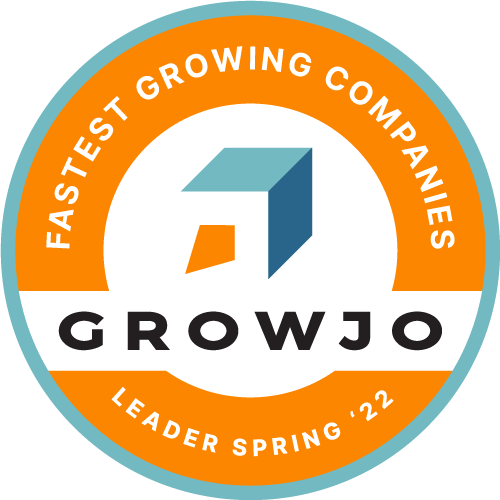7 Effective Financial Strategies and Cost-Saving Techniques
How to save money? In the competitive realm of business, the ability to save and efficiently manage financial resources is not just a necessity, but a strategic advantage. This comprehensive guide delves into the critical importance of saving for businesses and outlines 7 advanced strategies for doing so effectively, to fuel sustainable growth.
Saving is essential for businesses as it provides a safety net against market fluctuations, enables investment in growth opportunities, and offers the flexibility to innovate and adapt in rapidly changing markets.
By focusing on intelligent, strategic financial planning and resource allocation, this guide aims to equip business leaders with the tools and insights needed to transform their organization’s financial health into a robust foundation for expansion and long-term prosperity.
How to Save Money? Understand Your Financials
Understanding your current financial position is an integral part of strategic business management for several reasons:
Conduct Regular Financial Reviews: Regular reviews of balance sheets, income statements, and cash flow statements provide a comprehensive understanding of your business's financial health.
These documents offer insights into profitability, liquidity, and cash reserves. By frequently examining these statements, business leaders can make informed decisions, anticipate financial challenges, and identify growth opportunities.
For instance, a balance sheet reveals the company’s assets and liabilities, offering a snapshot of its financial stability. Income statements, on the other hand, show the profitability over a certain period, highlighting areas where expenses can be optimized.
Implement Robust Tracking Systems: Utilizing advanced software tools for real-time financial tracking and analytics is crucial in today's fast-paced business environment. These systems provide accurate and up-to-date financial information, allowing for quick response to emerging trends or issues.
Real-time tracking helps in monitoring cash flow closely, which is vital for maintaining operational stability and planning future investments. Additionally, these tools can automate various accounting processes, reducing the risk of human error and increasing efficiency.
Engage in Comparative Analysis: Comparing your company's financial metrics with industry standards is essential for benchmarking your business's performance. This comparison helps in identifying strengths and weaknesses relative to competitors.
Understanding where your business stands in the industry landscape can guide strategic decisions, like where to allocate resources or which markets to target. For example, if your business has higher operating costs than the industry average, it might signal a need to streamline processes or negotiate better terms with suppliers.
Understanding your current financial position through these methods enables proactive financial management, supports strategic planning, and drives informed decision-making - this is how to save money for business owners. This foundational knowledge is key to maintaining financial health and steering the business toward growth and stability.

Advanced Cost-cutting Strategies
To save some funds, you might need to do some cost-cutting strategies. The art of reducing expenses without undermining quality or productivity is a balancing act that requires both creativity and strategic thinking. Below, we delve deeper into effective cost-cutting strategies on how to save money.
1. Negotiating Better Rates with Suppliers
Building Strong Relationships: Cultivate strong, long-term relationships with your suppliers. Suppliers are more likely to offer better rates to loyal and consistent customers.
Bulk Purchasing: Consider buying in bulk. Suppliers often provide discounts for larger orders, but ensure these purchases align with your inventory needs to avoid wastage.
Alternative Suppliers: Regularly explore the market for potential new suppliers who may offer more competitive rates, prompting your current suppliers to renegotiate.
Collaborative Negotiation: Approach negotiations as a partnership. Aim for a win-win situation where both your business and the supplier benefit.
2. Energy-Saving Measures and Remote Work Options
Energy Audits: Conduct energy audits to identify areas where energy is wasted. Simple changes, like switching to LED lighting or optimizing HVAC systems, can lead to significant savings.
Remote Work Infrastructure: Implementing or expanding remote work options can significantly reduce office-related expenses such as utilities, office supplies, and real estate costs.
Technology for Efficiency: Utilize technology like smart thermostats and energy management systems to optimize energy use.
Employee Awareness and Incentives: Engage employees in energy-saving initiatives by raising awareness and possibly offering incentives for energy-efficient practices.
3. Streamlining Processes
Process Mapping: Begin by mapping out all your business processes. This visualization helps in identifying redundancies and bottlenecks.
Lean Management Principles: Adopt lean management principles to eliminate waste in processes, focusing on adding value to the customer while minimizing resources, time, and effort.
Automating Routine Tasks: Invest in automation for routine, time-consuming tasks. Automation reduces the likelihood of human error and frees up employee time for more valuable tasks.
Continuous Improvement Culture: Foster a culture of continuous improvement where employees are encouraged to identify inefficiencies and suggest improvements.
By implementing these strategies, businesses can cut costs intelligently, ensuring that savings are realized without sacrificing the quality of their products or services or the productivity of their operations. It's important to regularly review and adjust these strategies to align with evolving business goals and market conditions.

Smart Investment in Technology
Investing wisely in technology is not just about keeping up with the latest trends; it's about identifying tools that will bring long-term efficiency and cost reductions to your business.
1. Automation Software
Types of Automation Software: Look into various types of automation software, including customer relationship management (CRM), enterprise resource planning (ERP), and accounting software. Each serves different aspects of your business and can automate tasks ranging from data entry to complex decision-making processes.
Benefits: Automation reduces labor costs, minimizes errors, and increases efficiency. It enables employees to focus on more strategic tasks that require human intelligence and creativity.
Customization and Scalability: Seek automation solutions that can be customized to fit your business needs and can scale as your business grows.
Integration Capabilities: Ensure that any automation software can seamlessly integrate with your existing systems to avoid silos of information and processes.
Employee Training: Invest in training your employees to effectively use automation software. This ensures maximum return on investment and helps in overcoming resistance to new technology.

2. Cloud Services
Types of Cloud Services: Explore various cloud services, including Infrastructure as a Service (IaaS), Platform as a Service (PaaS), and Software as a Service (SaaS). Each offers different levels of control, flexibility, and management.
Cost Benefits: Cloud services typically operate on a pay-as-you-go model, which can lead to significant savings in IT infrastructure. They eliminate the need for large upfront investments in hardware and reduce ongoing maintenance costs.
Data Accessibility and Collaboration: Cloud services allow for easy access to data from anywhere, fostering collaboration among teams and facilitating remote work.
Scalability and Flexibility: Cloud solutions offer the flexibility to scale up or down based on your business's changing needs, ensuring you only pay for what you use.
Security and Compliance: Ensure that your chosen cloud service provider offers robust security measures and complies with relevant industry regulations. This is crucial in protecting sensitive business data.
By focusing on these aspects of technology investment, businesses can not only cut costs in the short term but also set the stage for sustainable growth and competitiveness in the long run. The key is to align technology investments with the overall business strategy and to continuously evaluate their effectiveness in improving operations and reducing costs.

Employee Engagement and Productivity
Investing in employee satisfaction is not just a moral imperative but a strategic financial decision on how to save money. Studies consistently show that satisfied employees are more productive, innovative, and loyal, which translates into cost savings and enhanced company performance.
Here are key strategies to boost employee engagement:
Professional Development: Offer training programs and career advancement opportunities. Employees who feel their growth is valued are more likely to be engaged and contribute positively.
Flexible Work Arrangements: Implement flexible work hours and remote work options. This flexibility can increase job satisfaction, reduce turnover, and save costs related to office space and resources.
Recognition and Rewards: Establish a system to recognize and reward employee achievements. This not only boosts morale but also encourages a culture of excellence and accountability.
Feedback and Communication: Encourage open communication and regular feedback. Engaging employees in decision-making processes makes them feel valued and part of the company's success.

Outsourcing Non-Core Activities
Outsourcing tasks that are not central to your business's core functions can lead to significant cost savings and operational efficiencies. Here's how to approach it and improve your skills on how to save money:
Identify Non-Core Activities: Assess your business processes to determine which tasks are essential and which can be outsourced. Typical candidates include IT services, human resources, and customer support.
Choose the Right Partners: Select outsourcing partners who not only offer cost benefits but also align with your business values and quality standards.
Focus on Core Functions: By outsourcing, your team can focus on core business areas, driving innovation and growth.

Tax Efficiency and Financial Planning
Managing taxes efficiently is a critical aspect of financial planning. Here are some suggestions:
Understand Tax Obligations: Stay informed about tax laws and regulations applicable to your business. This knowledge can help in identifying potential tax-saving opportunities.
Seek Professional Advice: Consider consulting with tax professionals. They can provide tailored advice to optimize your tax position and increase your skills on how to save money for business expansion or other purposes.
Plan for Tax Implications: Incorporate tax planning into your overall financial strategy. This includes understanding the tax implications of business decisions and investments.

Reinvesting Savings into Business Growth
Strategically reinvesting savings can fuel business expansion. Consider these areas for reinvestment:
Marketing and Branding: Invest in marketing initiatives to expand your market reach and brand presence.
Product Development: Allocate funds to research and development for new products or services, staying ahead of market trends.
Technology Upgrades: Invest in new technology to improve operational efficiency and customer experience.
In summary, effective financial management is multi-faceted, encompassing cost-saving strategies, smart technology investments, tax efficiency, and reinvestment in growth. Balancing these elements, along with a focus on employee engagement and strategic outsourcing, can set a business on a path to long-term success and sustainability. Remember, the key to financial health is not just cutting costs but making strategic decisions that foster growth, innovation, and resilience.
One more thing: did you know that hiring virtual assistants can save you up to $70,000? That’s a lot and can be utilized in other aspects of the business. If you’re contemplating getting one, fill out our contact form now and one of our Consultants will get in touch.
Read More From Virtudesk
Share this article
Meet our Most Trusted
Partners & Clients

Byron Lazine
Co-Founding Chief-of-Operations at BAM (Broke Agent Media)I’ve been using Virtual Assistants for years throughout all of my companies. Once we found Virtudesk the process got even easier and allowed us to scale out our hiring. Highly skilled and accountable professionals. 100% recommend!

Rebecca Julianna James
Realtor / Content CreatorBefore getting started with Virtudesk I had my doubts that they would find what I was looking for. I needed a very particular person to add to my team and let me tell you I am highly pleased! My virtual assistant Myril is the best! I am excited to grow my socialmedia accounts with her. Thank you Virtudesk!

Chelsea Erickson
Realtor La Belle RE GroupI am very happy with the assistance Virtudesk is providing for my real estate business. This is a newer position for my company and we are working through the creation and efficiency.















